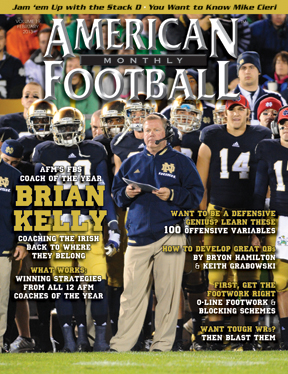Article CategoriesAFM Magazine
|
Variables 101 – Knowing how to analyze over 100 offensive variables gives your defense a statistical edge.by: Brian FleuryDefensive Backs Coach and Special Teams Coordinator, Towson University © More from this issue Knowing how to analyze over 100 offensive variables gives your defense a statistical edge. Every defensive coordinator has his own style and process in preparing a game plan for the next opponent. Part of this process is detailing the statistical side of probability on the opponent’s play selection. Ideally, each defensive call has the probability of being successful, helps create one-on-one favorable match-ups and allows the players to execute the proper techniques in stopping the offense. If two out of these three criteria are met on each play, it will usually be a successful play for the defense. GAME PLAN PROCESS
|
|
|||||||
| HOME |
MAGAZINE |
SUBSCRIBE | ONLINE COLUMNISTS | COACHING VIDEOS |
Copyright 2026, AmericanFootballMonthly.com
All Rights Reserved





